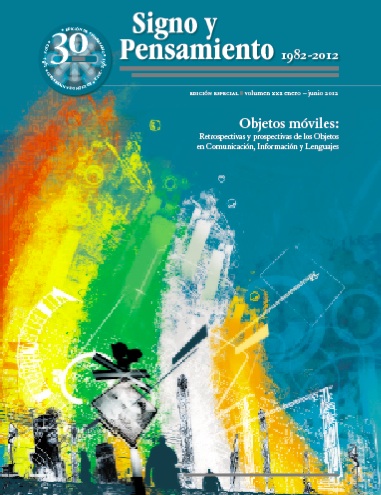Abstract
Language materials, in particular coursebooks, are a source of exposure for learners to language and culture. In multicultural contexts, they become helpful tools that promote encounters between people of different cultural backgrounds. However, the reality shows that most language coursebooks are still designed from traditional perspectives that do not allow learners to develop their abilities to deal with intercultural encounters. On the contrary, they reinforce stereotypes and strengthen the belief that one nationality is superior to the others. This article presents some theoretical constructs and results taken from one stage of a qualitative research that sought to determine how a set of principled language materials could develop the students’ Intercultural Communicative Competence (ICC).
— (2008), “On becoming a global soul: A path to engagement during study abroad”, in V. Savicki, Developing intercultural competence and transformation. Theory, research, and application in international education, (pp. 13-31), Sterling Virginia USA, Stylus Publishing, LLC.
— (1998), Basic concepts of intercultural communication. Selected readings. Boston USA, Intercultural Press, A Nicholas Brealey Publishing Company.
Buttjes, D., & Byram, M. (1991), Mediating languages and cultures, Clevedon, Avon, Multilingual Matters.
Byram, M. (1989), Cultural studies in foreign language education, (D. Sharp, Ed.), Clevedon UK, Multilingual Matters Ltd.
— (1997), Teaching and assessing intercultural communicative competence, Clevedon, United Kingdom, Multilingual Matters.
Byram, M., & Fleming, M. (1998), Language learning in intercultural perspective. Approaches through drama and ethnography, Cambridge, Cambridge University Press.
Byram, M., Nichols, A., & Stevens, D. (2001), Developing intercultural competence in practice, Clevedon UK, Multilingual Matters LTD.
Corbett, J. (2003), An intercultural approach to English language teaching, Clevedon, Great Britain, Multilingual Matters.
Council of Europe. (June 2008), The White Paper on Intercultural Dialogue: living together as equals in dignity, Strasbourg, Council of Europe.
Cummins, J., Harley, B., Swain, M., & Allen, P. (1990), “The nature of language proficiency”, in J. Cummins, B. Harley, P. Allen, & M. Swain, The development of second language proficiency, (pp. 7-24). Cambridge UK, Cambridge University Press.
Davcheva, L., & Sercu, L. (2005), “Culture in teaching language materials”, in L. Sercu, E. Bandura, P. Castro, L. Davcheva, C. Laskaridou, U. Lundgren, et al., M. Byram, & A. Phipps (Eds.), Foreign language teachers and intercultural competence, (pp. 90-109), Clevedon UK, Multilingua Matters LTD.
Deardorff, D. K. (2008), “Intercultural competence: A definition, model, and implications for education abroad”, in V. Savicki, Developing intercultural competence and transformation: Theory, research, and application in international education, (pp. 32-53), Sterling Virginia USA, Stylus Publishing, LLC.
Fantini, A. E. (2000), A central concern: developing intercultural competence. Adapted in part from a `Report by The Intercultural Communicative Task Force, Brattleboro Vermont USA, World Learning.
— (2006), “SIT Graduate Institute. A program of world learning”, pdf. Retrieved 2008, June-5 from: http://www.sit.edu/publications/docs/feil_research_report.pdf
Fennes, H., & Hapgood, K. (1997), Intercultural learning in the classroom. Crossing borders, London UK, Cassell Council of Europe Series.
Geertz, C. (1975), The interpretation of cultures, New York, Basic Books.
Kolb, D. (1984), Experiential learning: experience as the source of learning and development, New Jersey US, Prentice Hall.
Kramsch, C. (1998), Language and culture, Oxford, Oxford University Press.
Lázár, I., Huber-Kriegler, M., Lussier, D., Matei, G., & Peck, C. (2007), Developing and assessing intercultural communicative competence, Austria, Council of Europe Publishing.
Moon A., J. (2004), A handbook of reflective andexperiential learning: theory and practice, Abingdon, Oxon UK, Rootledge Falmer.
Pulverness, A. (2003), “Materials for cultural awareness”, in B. Tomlinson, Developing materials for language teaching (pp. 426-438), London, Great Britain, Continuum.
Quappe, S., & Cantatore, G. (2007), “What is cultural awareness, anyway? How do I build it?” Retrieved 2009, October-22 from Culturosity.com: http://www.culturosity.com/articles/whatisculturalawareness.htm
Rico Troncoso, C. (2010), “The effects of language materials on the development of intercultural competence”, in B. Tomlinson, & H. Masuhara, Research for materials development in language learning (pp. 83-102), London, Continuum.
Savicki, V. (2008), Developing intercultural competence and transformation. Theory, research and application in international education, Virginia, United States of America, Stylus Publishing.
Sercu, L., Bandura, E., Castro, P., Davcheva, L., Laskaridou, C., Lundgren, U., et al. (2005), Foreign language teachers and intercultural competence: an international investigation, Clevedon UK, Multilingual Matters.
Tomlinson, B. (2003), “Developing principled frameworks for materials development”, in B. Tomlinson, Developing materials for language teaching, (pp. 107- 129), London UK, Continuum.
Valdes, J. (1986), Culture bound: bridging the cultural gap in language teaching, Cambridge, UK, Cambridge University Press.
This journal is registered under a Creative Commons Attribution 4.0 International Public License. Thus, this work may be reproduced, distributed, and publicly shared in digital format, as long as the names of the authors and Pontificia Universidad Javeriana are acknowledged. Others are allowed to quote, adapt, transform, auto-archive, republish, and create based on this material, for any purpose (even commercial ones), provided the authorship is duly acknowledged, a link to the original work is provided, and it is specified if changes have been made. Pontificia Universidad Javeriana does not hold the rights of published works and the authors are solely responsible for the contents of their works; they keep the moral, intellectual, privacy, and publicity rights.
Approving the intervention of the work (review, copy-editing, translation, layout) and the following outreach, are granted through an use license and not through an assignment of rights. This means the journal and Pontificia Universidad Javeriana cannot be held responsible for any ethical malpractice by the authors. As a consequence of the protection granted by the use license, the journal is not required to publish recantations or modify information already published, unless the errata stems from the editorial management process. Publishing contents in this journal does not generate royalties for contributors.


